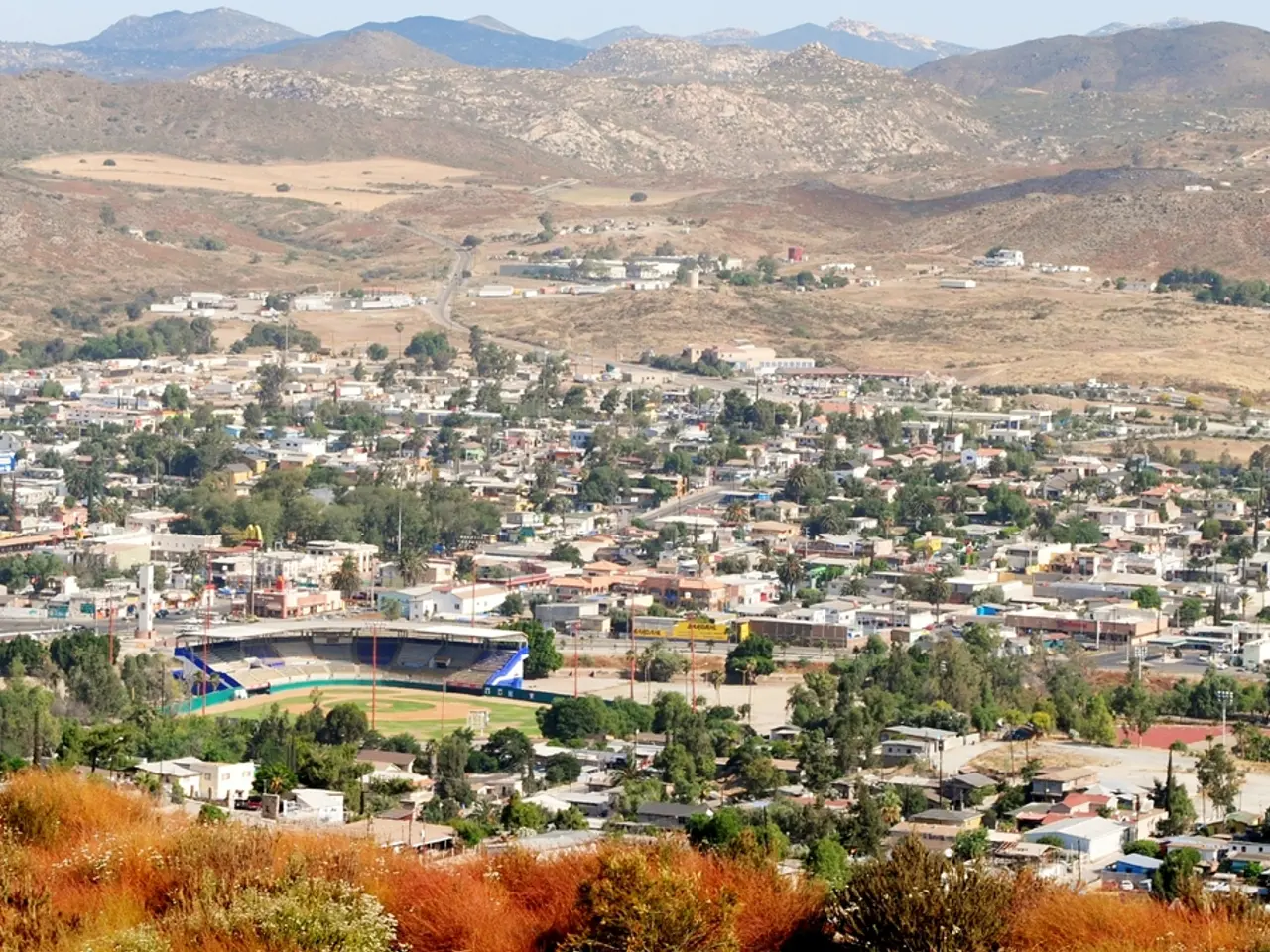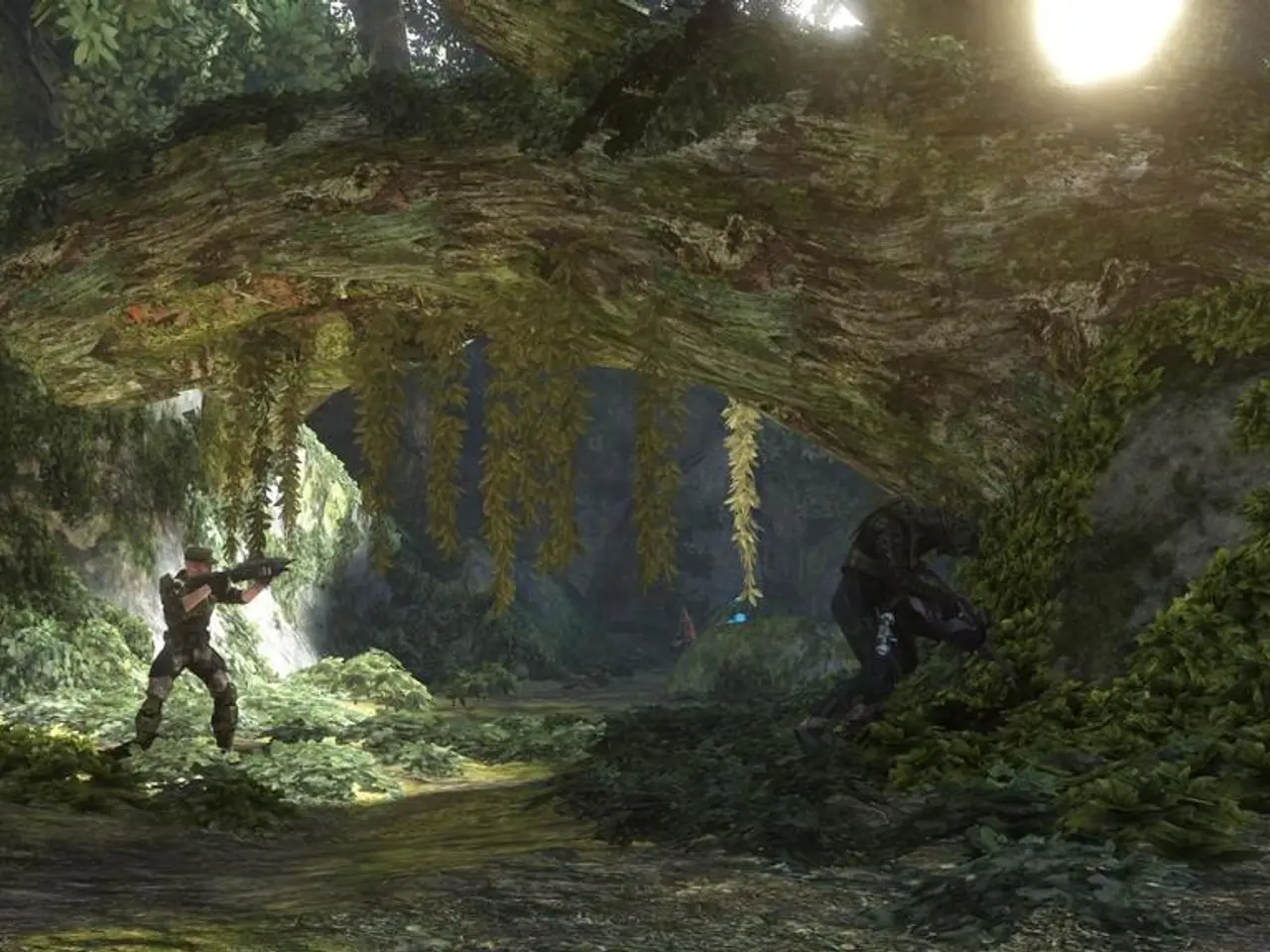Get Back to Nature with Rewilding
Large-scale Ecological Renovation Projects: Instigating Comprehensive Restoration of Ecosystems
Want to help the planet and boost biodiversity? Embrace rewilding! This incredible conservation approach focuses on restoring natural ecosystems by letting Mother Nature take the lead—with just a touch of human assistance.
Curious about what rewilding entails? Here's how it works:
Back to Basics: Understanding Rewilding
Rewilding is all about letting natural processes run their course, with minimal human interference. That means reintroducing native species, particularly the ones that play key roles (like keystone and apex predators), fixing up environments, and keeping an eye on humans to ensure they're not wrecking the place.
Why Bother Rewilding?
- Biodiversity Bliss: Reverses the loss of species by re-establishing vital interactions that sustain ecosystem health.
- Tough as Nails: Restored ecosystems are less vulnerable to changes in climate, habitat damage, and other challenges.
- Green Gains: Healthy ecosystems provide essential services like carbon sequestration, water purification, soil nutrition, and flood control—all benefits for both animals and people.
- Climate Focus: Restoring forests, wetlands, and grasslands helps to reduce greenhouse gas concentrations by boosting carbon sinks.
Key Components of Rewilding Programs
- Planning & Collaboration: Evaluate the existing environment, identify missing pieces, and create a comprehensive restoration plan with local communities and authorities.
- Habitat Restoration: Remove threats like invasive species and habitat destruction, replant native vegetation, and help ecosystems recover.
- Species Introduction: Reinforce ecosystems with important species that control factors like vegetation, predation, and nutrient cycling.
- Connectivity: Create wildlife corridors and wildways to allow species to move around and intermingle across broken-up habitats.
- Monitoring & Adjustment: Keep tabs on ecological outcomes and species health, and modify management strategies as needed for long-term success.
Witness the Wonders of Rewilding in Action
From the plains of Africa to the mountains of Europe, rewilding programs have demonstrated amazing success:
- Yellowstone's Wolf Pack: The reintroduction of gray wolves helped to control elk populations, reversing ecosystem degradation and allowing shrubs, trees, and other plants to flourish[6].
- African Parks' Restoration Projects: White rhinos, elephants, and lions have been successfully reintroduced across Africa, boosting local economies through eco-tourism[5].
- The Ennerdale Revival: Cutting back on intensive grazing, planting native trees, and restoring natural river processes have revitalized degraded landscapes in the UK[6].
Benefits for Both Nature AND People
- Elevated Biodiversity: A restored ecosystem is home to a broader array of species and more intricate ecological connections.
- Climate Solution: Intact ecosystems help regulate our climate as powerful carbon sinks.
- Economic Empowerment: Eco-tourism and sustainable resource use connected to rewilded areas provide income and jobs for local communities.
- Enhanced Ecosystem Services: Clean air and water, fertile soils, and natural flood control improve human health and well-being[5][7].
Preparing for Success AND Scares
Rewilding is all about careful planning, strategic implementation, and staying manageable. Working with conservation authorities such as the IUCN helps ensure responsible practices, while adaptation and community involvement are key to overcoming challenges and maximizing results[1][5].
So why settle for a boring, biodiversity-bereft world? Join the rewilding movement and help us restore the planet and its incredible creatures, one ecosystem at a time!
[1] https://iucn.org/resources/issues-brief/benefits-and-risks-rewilding[2] https://wildlandsconservancy.org/stories/rewildling-tule-elk[3] https://www.rewild.org[4] https://globalrewilding.earth[5] https://www.africanparks.org/rewilding-restore-ecosystems[6] https://frontiergroup.org/articles/rewilding-the-promise-of-a-hands-off-approach-to-conservation/[7] https://www.ujecology.com/articles/the-role-of-rewilding-in-combating-biodiversity-loss-103107.html[8] https://rewilding.org
Fascinating Facts & Findings:
- Netherlands: Oostvaardersplassen aims to create a prehistoric ecosystem by introducing large herbivores such as Heck cattle and Konik horses[5].
- USA: American Prairie is restoring a vast grassland ecosystem by reconnecting habitats and reintroducing native species such as bison[5].
- Mozambique: Gorongosa National Park is strengthening wildlife populations and ecological functions after civil conflict[5].
- Scotland: Tireragan Trust is mapping tree species, collecting seeds, and planting cuttings to help restore temperate rainforests[1].
- England: Derbyshire and Nottinghamshire Wildlife Trusts are considering the possibility of reintroducing European elk alongside beavers to English habitats[1].
- Overall Ecosystem Resilience: Rewilding enhances ecosystem resilience by restoring natural processes and ecological balance[5].
- Improved Biodiversity: Rewilding supports a more diverse array of species and complex ecological connections[5].
- Benefits for Human Communities: Rewilding can provide economic opportunities through eco-tourism, support sustainable livelihoods, and engage communities in conservation efforts[5].
- By advocating for rewilding, we can contribute to environmental science, harnessing the power of science to aid in climate-change mitigation through the restoration of natural ecosystems.
- As rewilding programs progress, we may see an improvement in our lifestyles, as healthy ecosystems in home-and-garden settings can provide natural services like air purification, water filtration, and pest control.
- Embracing rewilding offers the potential for increased biodiversity in our surroundings, permitting a better balance between human lifestyle and the needs of nature, specifically in the realm of environmental science.




